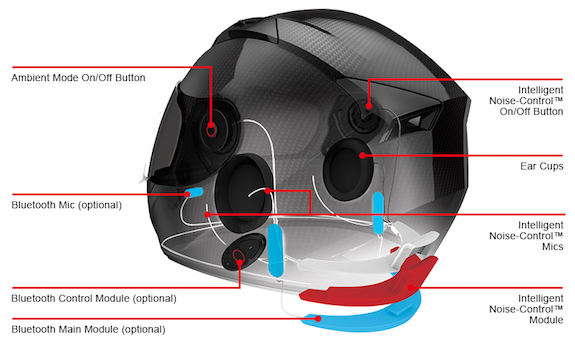Smart helmets of the future may not only have integrated Bluetooth, GPS, communication, head-up display and noise-cancelling technology but also air pollution alerts!
The first four technologies are now being offered in the Skully helmet, while the upcoming Sena will feature noise-cancelling technology.
However, helmets seem to be capable of much more technology, according to iHelmet inventor Ganindu Nanayakkara, a young Sri Lankan engineer.
His iHelmet has a number of features shown in the above video, all of which are controlled by a smartphone app.
Some of those features are an LED light on the front which can flash presumably to make the rider more visible at night, rear distance sensors to indicate tailgaters that flash red light alerts inside the chin bar, a remote control, a G sensor that detects a crash and alerts friends with GPS co-ordinates of the incident, an adjustable speed alert and when you take off your helmet it records where the bike is parked on a GPS map.
It also has a smoke detector to alert you to high levels of air pollution.
Ganindu says the invention would only cost a little more than $100 if, or when, it goes into production.
Last year, he was awarded $500,000 as one of the runner-up selections in the Verizon Powerful Answers Award contest and he was chosen as a participant in the Global Solutions Program at Singularity University sponsored by Google.
At the moment the iHelmet has a rather large module on the back which could add significantly to the weight of the helmet, as well as cause problems with rotational forces on the head in the event of a crash.
While some people may shudder at the advance of technology, others see it as a convenience and advance in rider safety that will give them more freedom and allow them to enjoy their riding more.
Meanwhile, the Skully helmet has been held up by the current changes in helmet standards in Australia, while the Sena Smart helmet is expected in Australia in July or August.
There are no Aussie prices for either yet.



